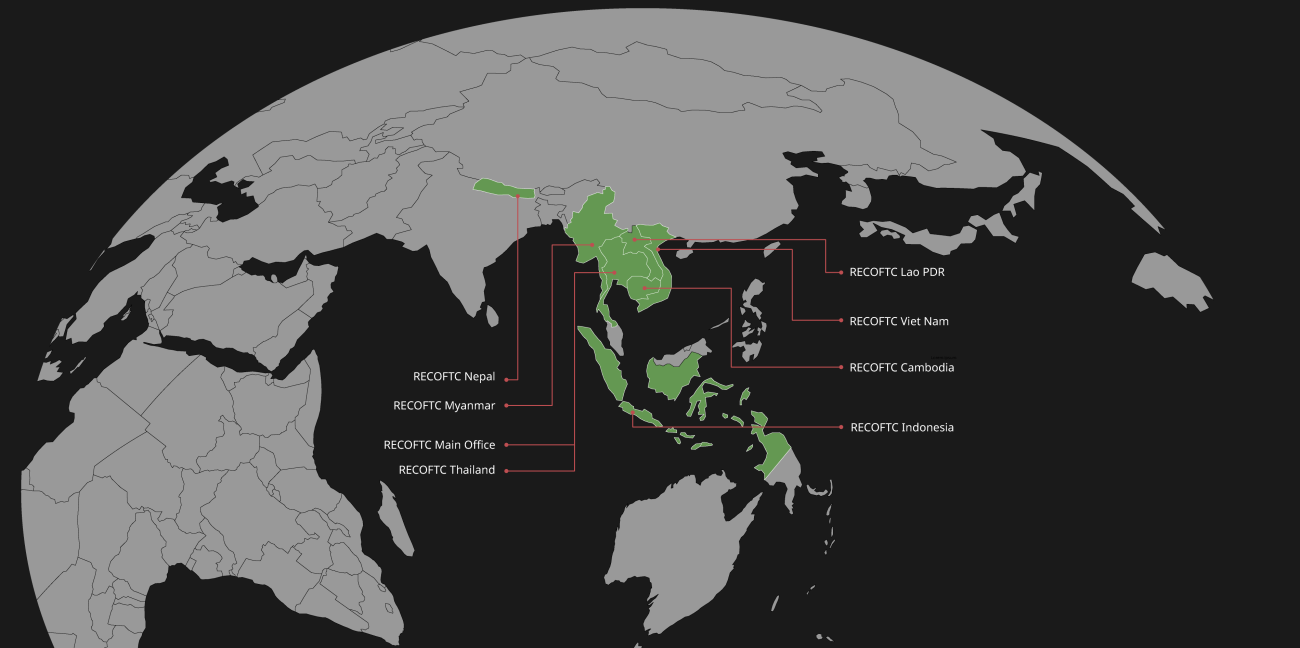
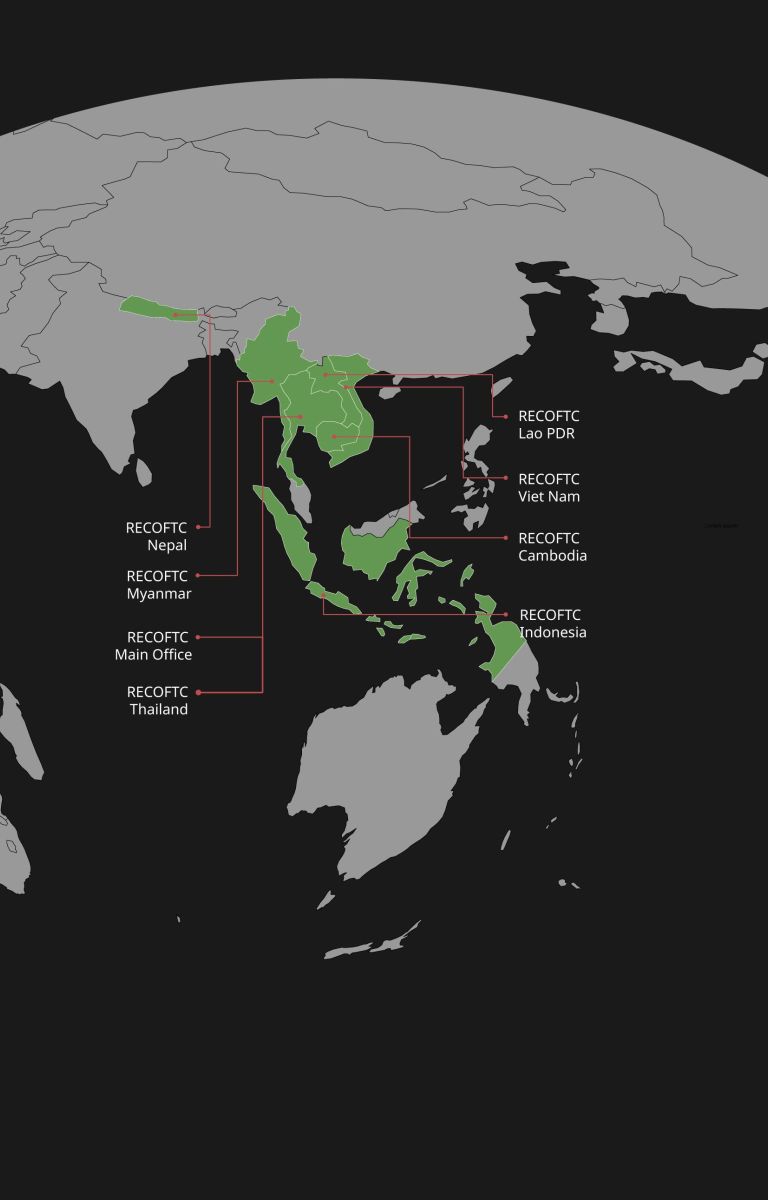
RECOFTC’s 144 team members based in seven focal countries in the Asia–Pacific region worked with 196 organizations and 83,048 community forest households in 2020–2021. Through 33 initiatives, they contributed to the growth of community forest areas, which is a foundation for achieving the Paris Agreement on climate change and many of the Global Goals, also known as the Sustainable Development Goals, or SDGs.
RECOFTC’s entry point to sustainable development and climate change solutions is community forestry. With the overarching aim of helping to achieve the Global Goals, RECOFTC’s innovations, knowledge and initiatives enable countries to foster good forest governance and to mitigate and adapt to climate change.

The four goals of RECOFTC’s Strategic Plan 2018–2023 work together to promote sustainable development across the region and are based on secure rights and equitable participation. These goals put people at the centre of development to create the conditions for communities to transform their landscapes and for countries to achieve their commitments to the Global Goals.
RECOFTC’s work to achieve its four Strategic Plan goals links with all 17 Global Goals because they are all ultimately about poverty reduction and increased well-being of humans and the planet. RECOFTC’s work in fiscal year 2020–2021 most closely aligned with seven of the Global Goals.
 For example, RECOFTC helped 472 communities gain formal approval of their stewardship over their community forest, representing 60,906 households. A total of 451,302 hectares of community forest were under direct RECOFTC support.
For example, RECOFTC helped 472 communities gain formal approval of their stewardship over their community forest, representing 60,906 households. A total of 451,302 hectares of community forest were under direct RECOFTC support.
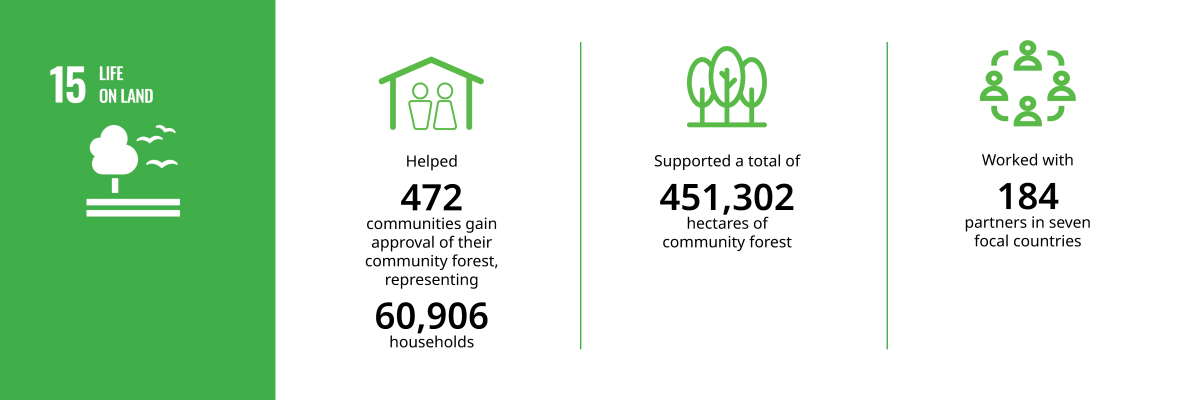
RECOFTC supported community forest user groups in the Asia–Pacific region to build climate change responses into their community forestry management plans. Of the 472 approved community forests that RECOFTC worked directly with in 2020–2021, 453 community forestry user groups included climate change mitigation and adaptation interventions in their community forestry management plans. These user groups continue to manage a total of 268,631 hectares of forest with strategies that can respond to climate change threats.
To enhance public knowledge and raise awareness, RECOFTC published 172 communication and knowledge products about community forestry and climate change on its website and in other public forums. These reached more than 3 million people.

In 2020–2021, about 25 percent of the members of community forestry management committees in RECOFTC’s program areas were women. Those community forestry management committees also included people with disabilities and Indigenous Peoples.

Around 9,141 community members participated in social inclusion- and gender equity-related events organized by RECOFTC and partners. These programs aimed to reduce discrimination, marginalization and the exclusion of people living in fragile contexts in RECOFTC’s seven focal countries.
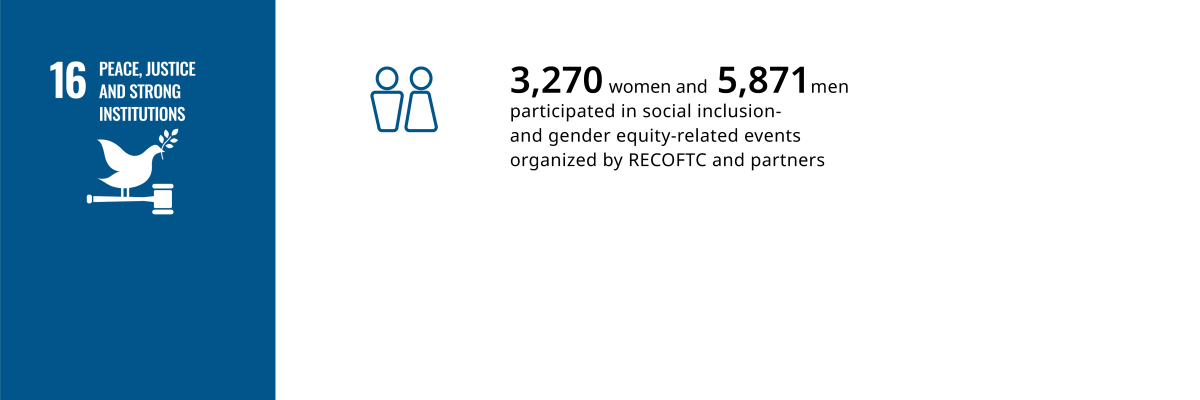
RECOFTC supported 66 individual community-based enterprises that involved 40 women and 50 men and 35 group enterprises. Of the 22 community business partnership agreements developed by local entrepreneurs and investors, 13 were formal and nine were informal. They covered partnerships for such enterprises as teak wood production and processing and non-timber forest products.
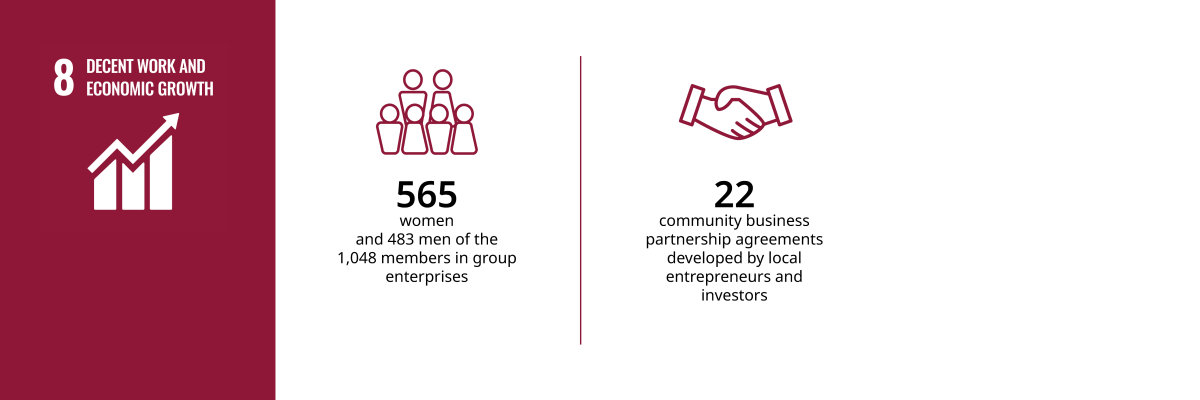
In 2020–2021, RECOFTC trained 2,229 women and men on community forestry and sustainable development topics related to tenure security, climate change, social inclusion and more. And 2,151 women and men accessed RECOFTC’s e-learning course Community Forestry 101. This e-course centres on community-led forest management for sustainable development and inclusive climate change solutions.
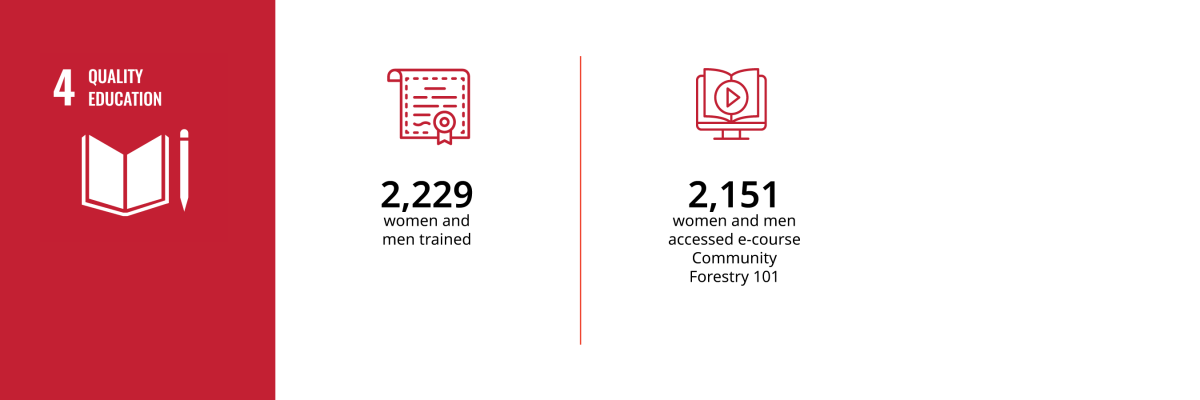
Community forestry is a safeguard for the sustainable use of natural resources. In 2020–2021, RECOFTC trained 2,059 women and men in the sustainable and efficient use of natural resources. Of them, 12 were also trained on sustainable investment and community-based enterprise development.

Read the detailed report on the links between RECOFTC’s work in 2020–2021 and the Global Goals.
